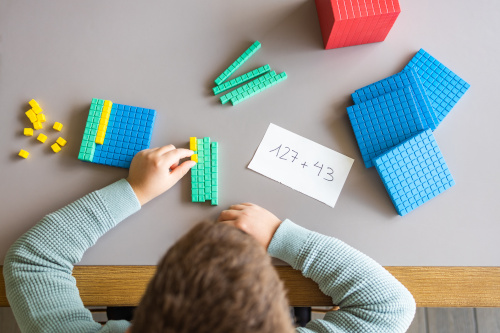As students return to class this fall, K–12 teachers and administrators face many challenges—and math instruction is high on the list.
Although state assessment data from the 2021–2022 school year suggest that students have begun to close pandemic-related learning gaps, the latest National Assessment of Educational Progress (NAEP) results reveal that students’ math scores dropped seven points—the first-ever score drop for math in the assessment’s fifty-year history.
Educators now face the daunting task of making up for lost instructional time from the COVID-19 pandemic, while at the same time, addressing drops in math achievement and teaching grade-level content. Where do educators start?
At Belle Fourche Middle School in South Dakota, we’re fortunate to be able to provide 50 extra minutes of math enrichment per day for the students who need it. We’re also using technology to provide highly targeted and personalized math instruction and practice for our students.
With these measures, we’re ensuring that students who have fallen behind in math make measurable gains so they achieve grade-level proficiency. Here’s our approach, and three key recommendations for educators as they seek to close the gaps in students’ math skills this year.
1. Get personal
Due to the disruptions to learning over the last few years, students are at different places in their learning trajectories. Using data to pinpoint each child’s specific skills ensures we are able to meet their unique learning needs.
At Belle Fourche, we utilize a math practice tool called Get More Math. This program uniquely tailors math practice sessions to each student based on their progress and comprehension of previously taught and newly introduced concepts. By personalizing the learning and practice process to each student’s needs, I can spend the valuable classroom time we have together directing my instruction accordingly.
Related:
We can teach math better–here’s how
How I use digital curriculum in my math classroom
2. Something old, something new
Educators must balance the need to catch students up and fill in the gaps with the need to teach grade-level skills and content. An approach that combines instruction of new content, with the practice and reinforcement of earlier skills, addresses these simultaneous requirements.
Math teachers can build cumulative math practice into their daily lessons, combining new grade-level content with a spiral review of previously taught concepts to ensure mastery and that the teach it, learn it, forget it cycle does not occur.
3. Trust the process
Educators, parents and students need to approach this school year with patience. A cumulative, “spiraled” approach to math instruction and review is an effective way to ensure students will continue to make progress toward grade-level proficiency by the end of the year.
With the right combination of tools, instructional strategies and student supports, K–12 teachers and administrators can overcome this challenge and get students back on the path toward math success this year.
- The evolving requirements of a K-12 school network - April 24, 2024
- A bungled FAFSA rollout threatens students’ college ambitions - April 24, 2024
- How digital tools and AI can enhance social studies - April 23, 2024

